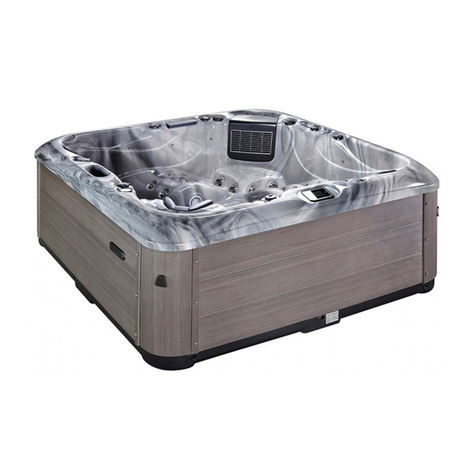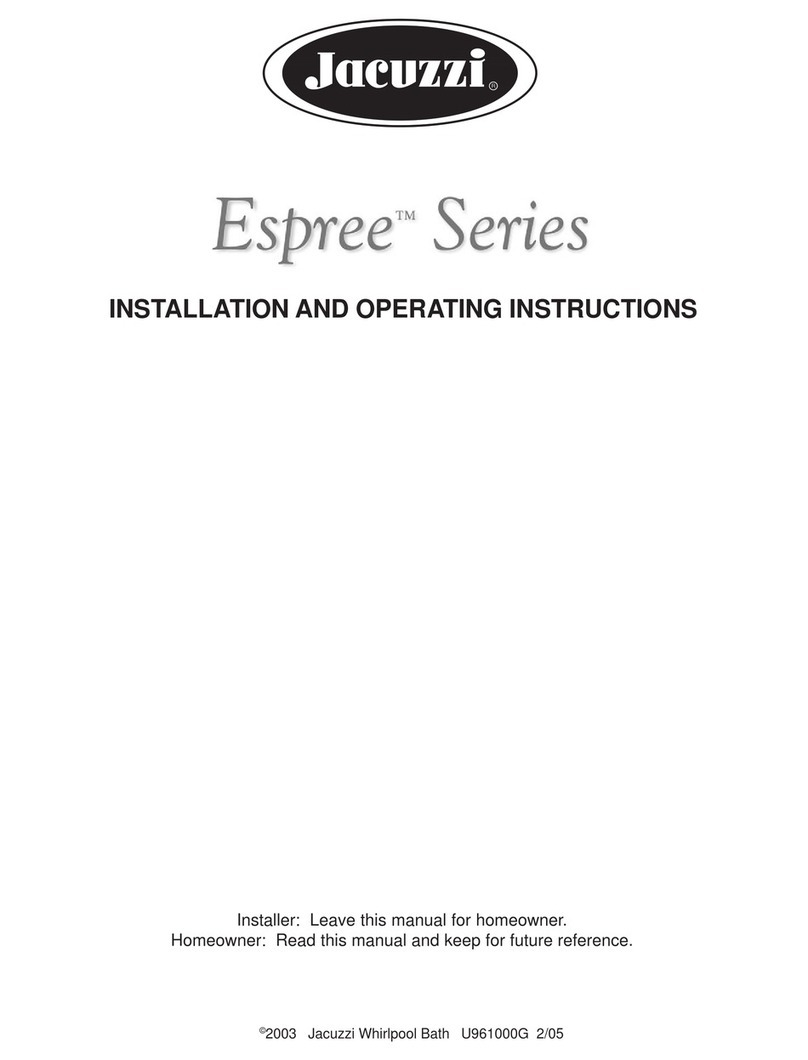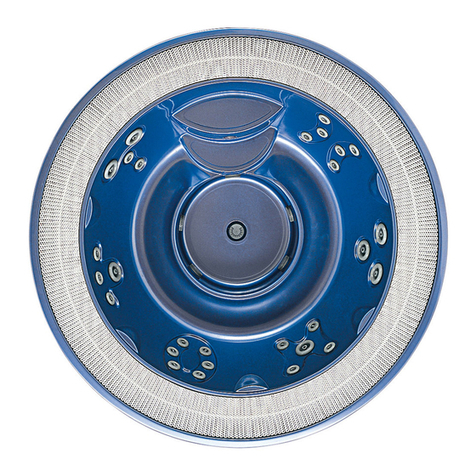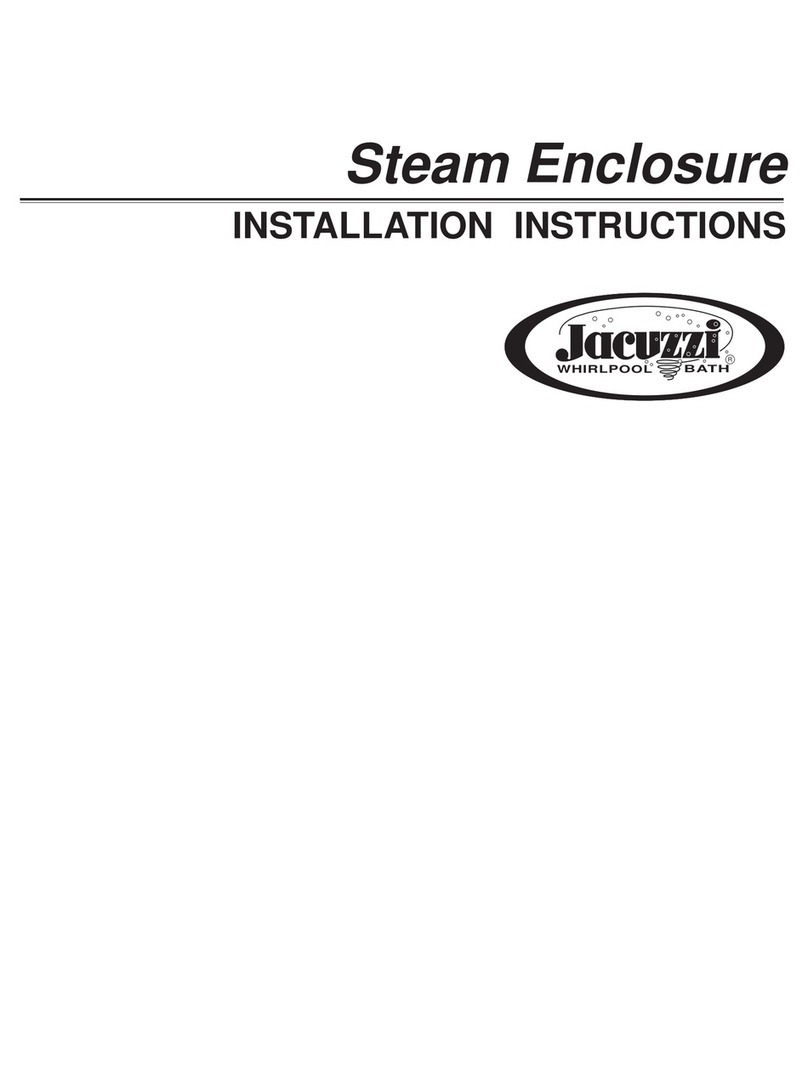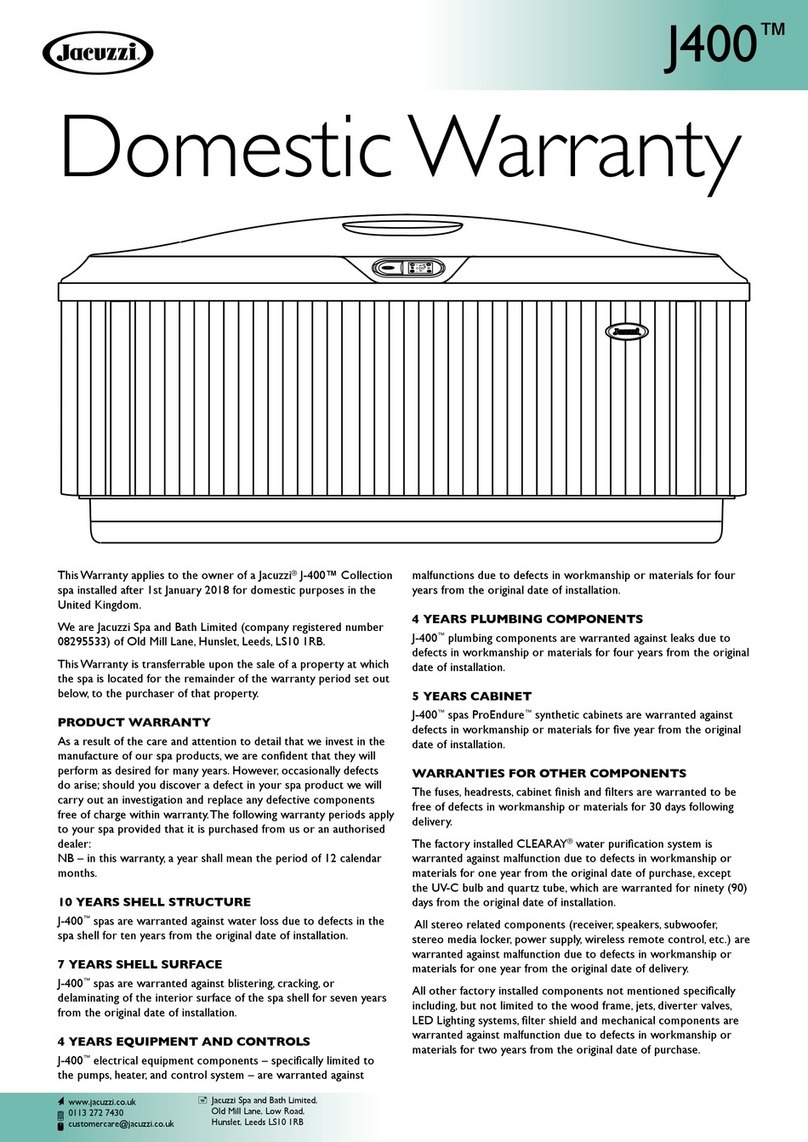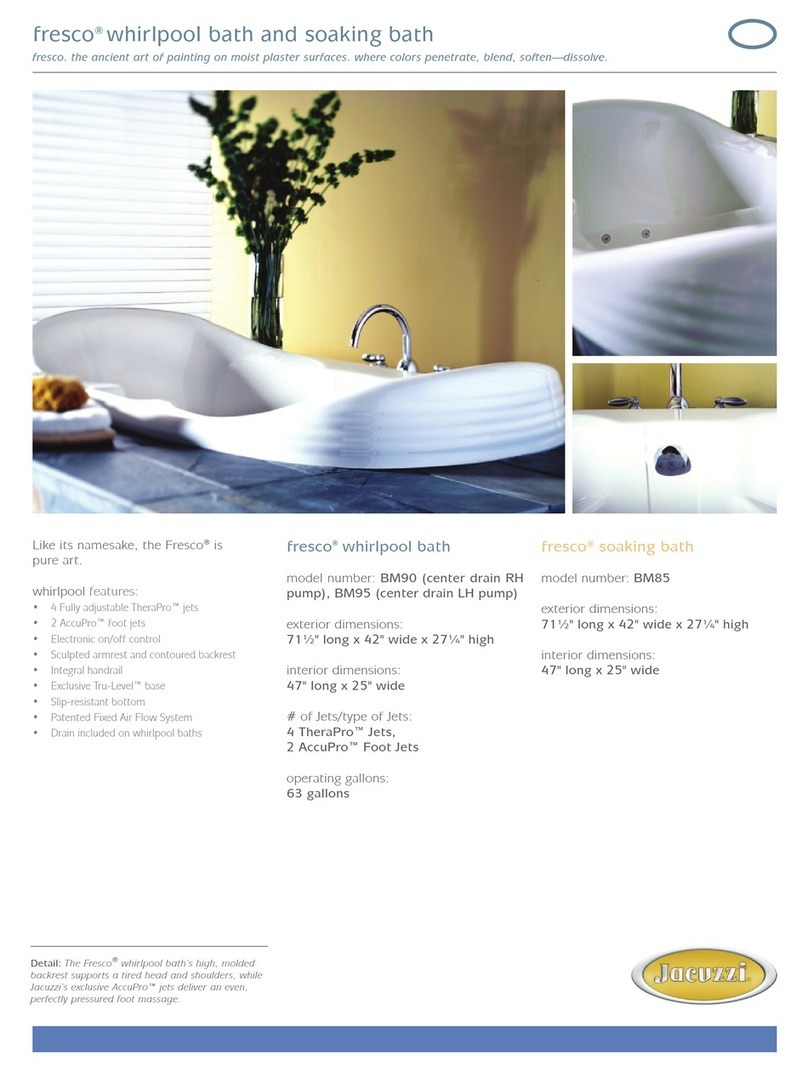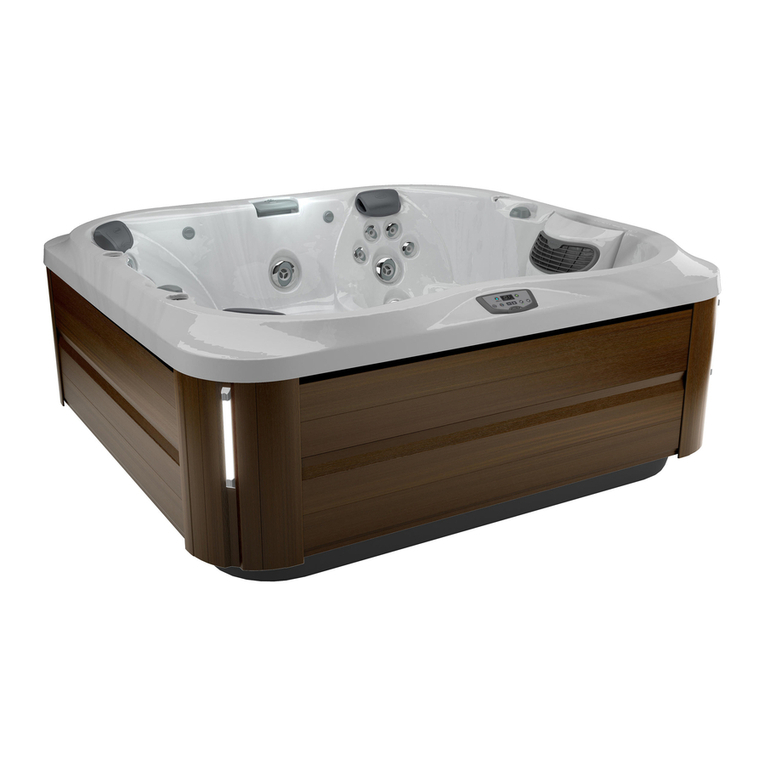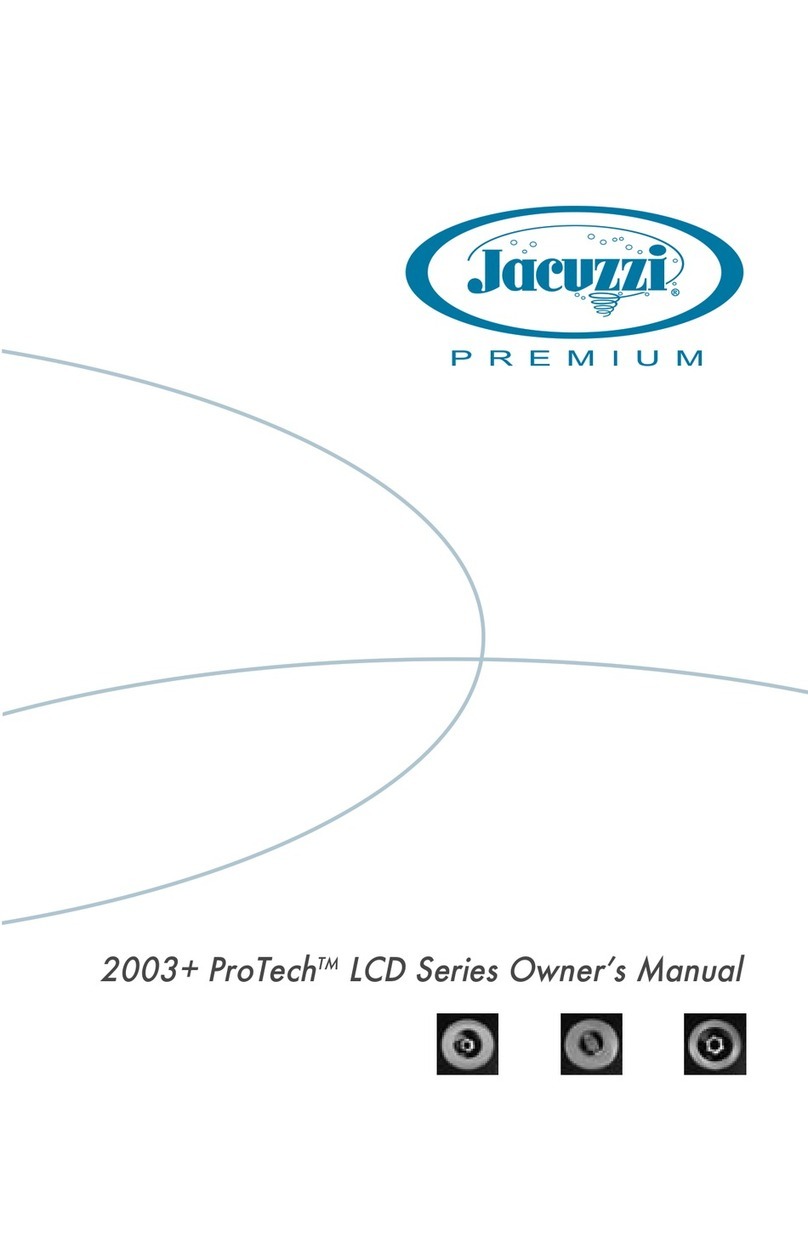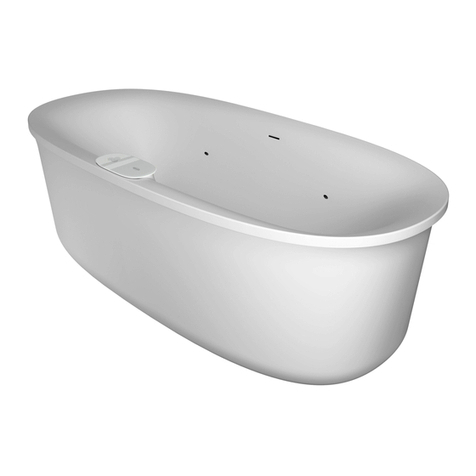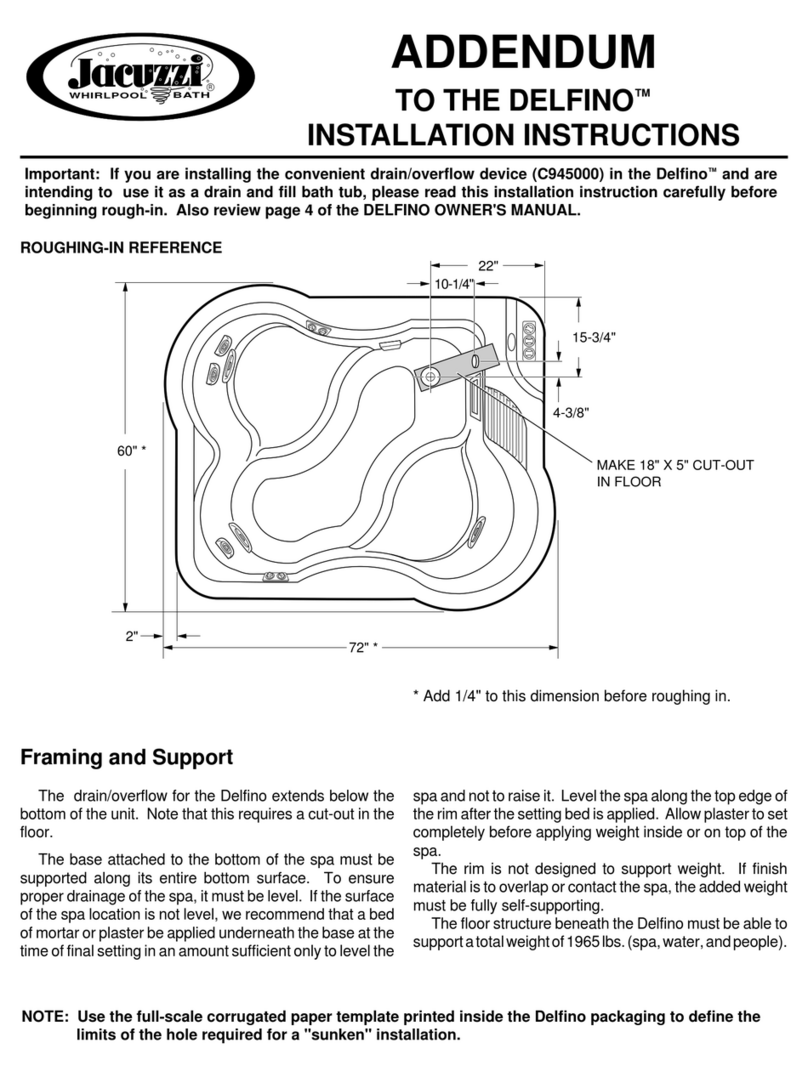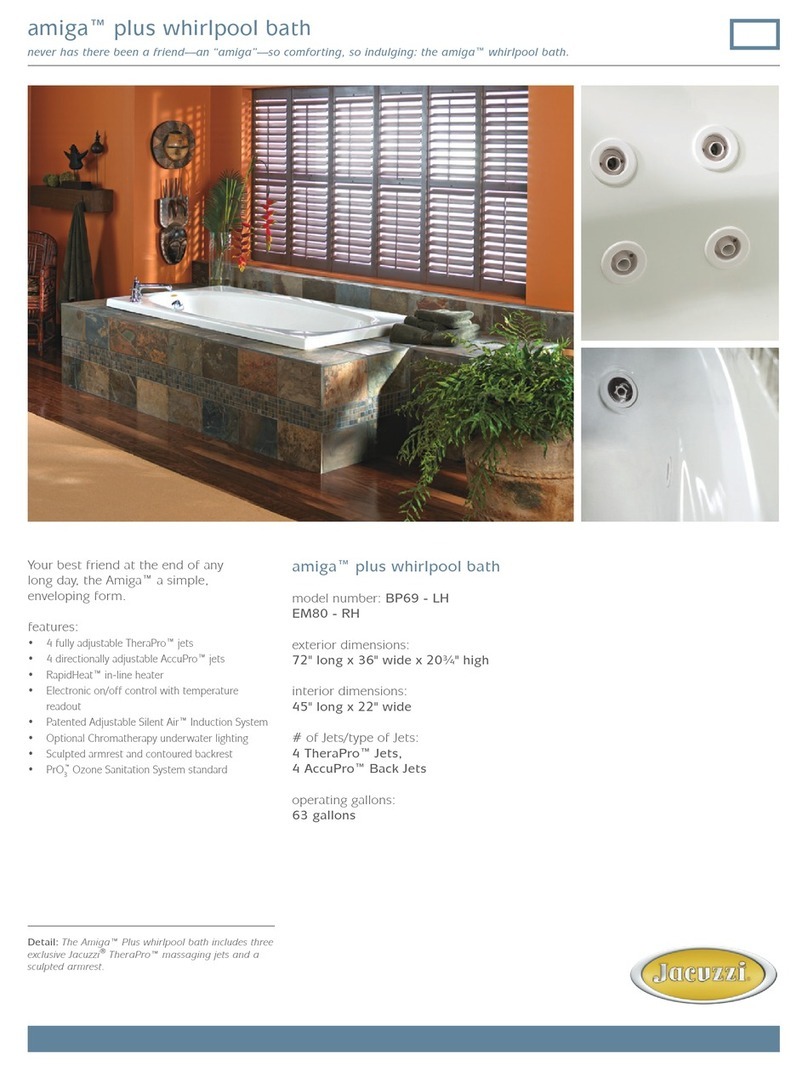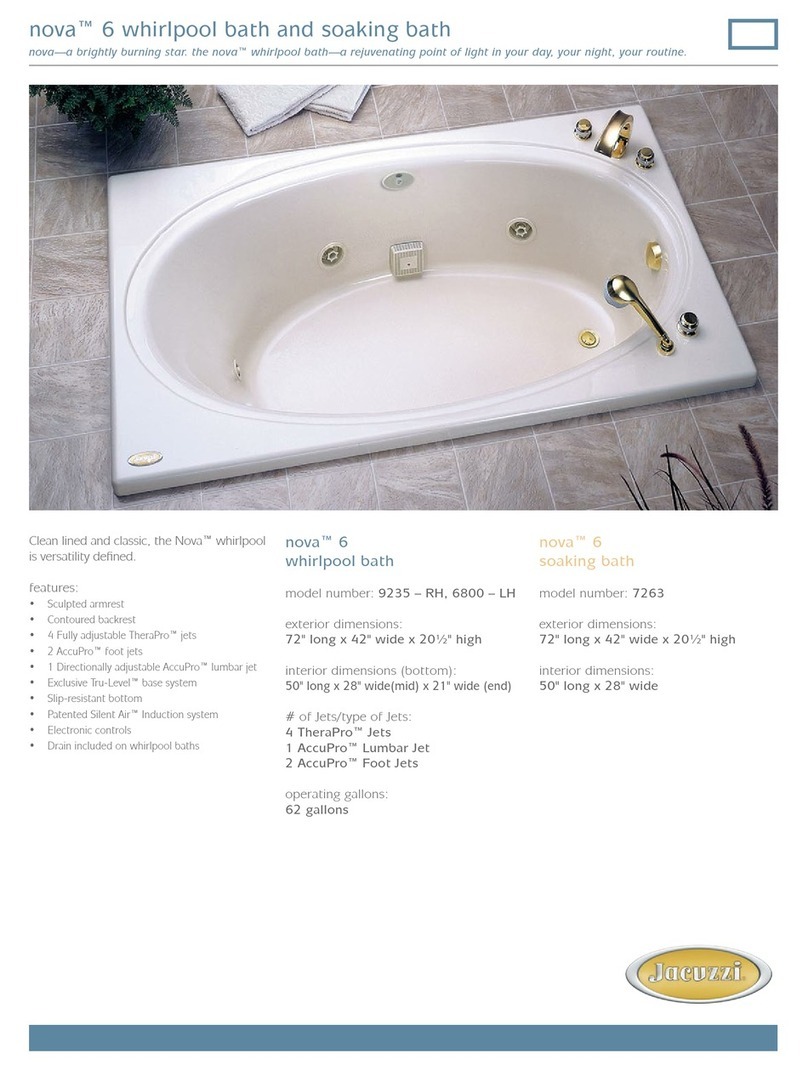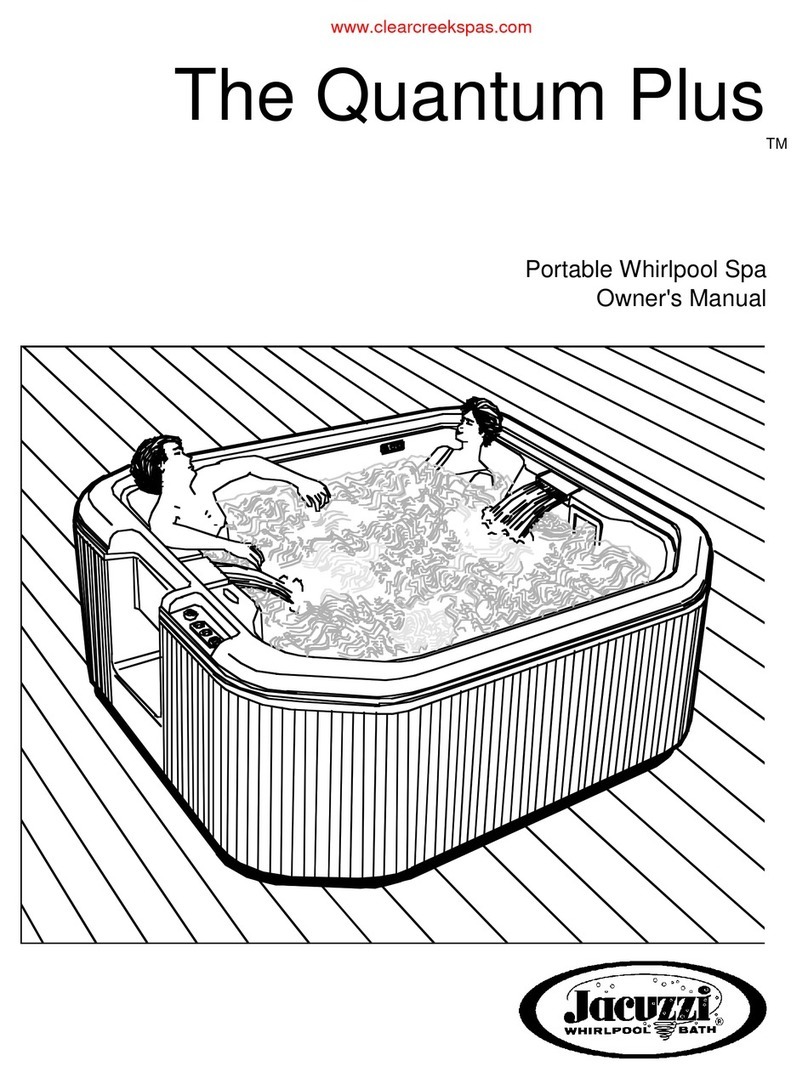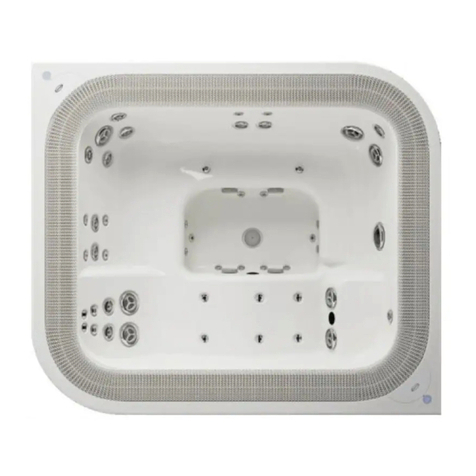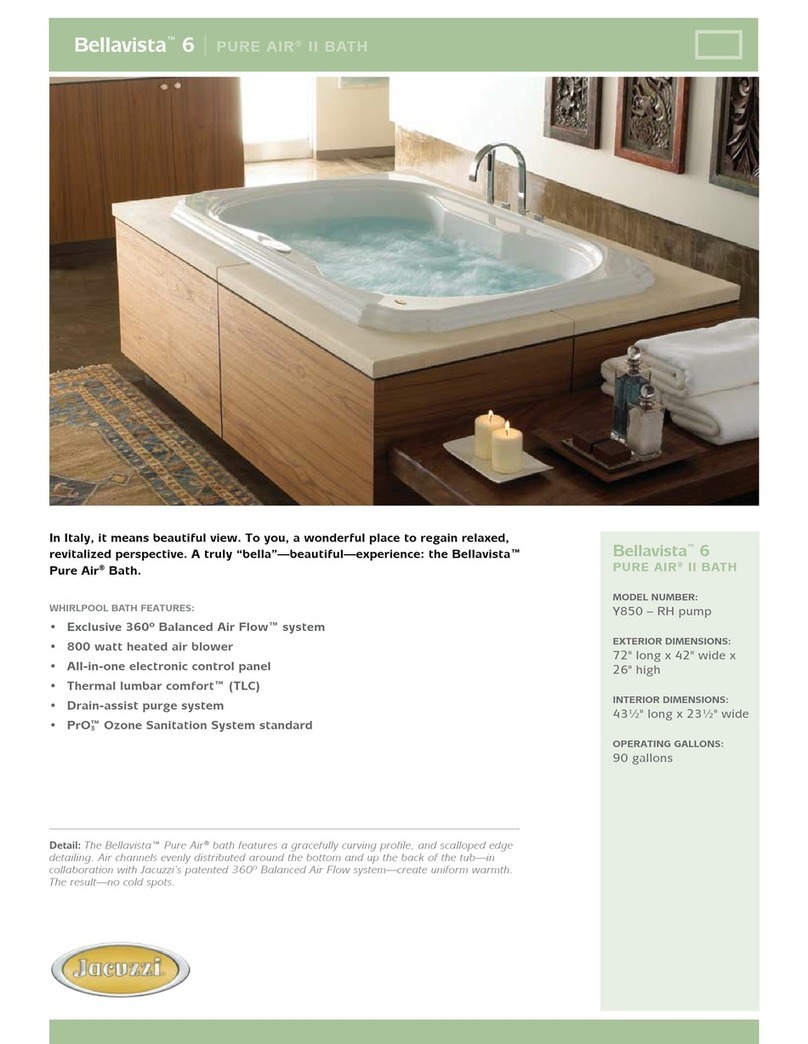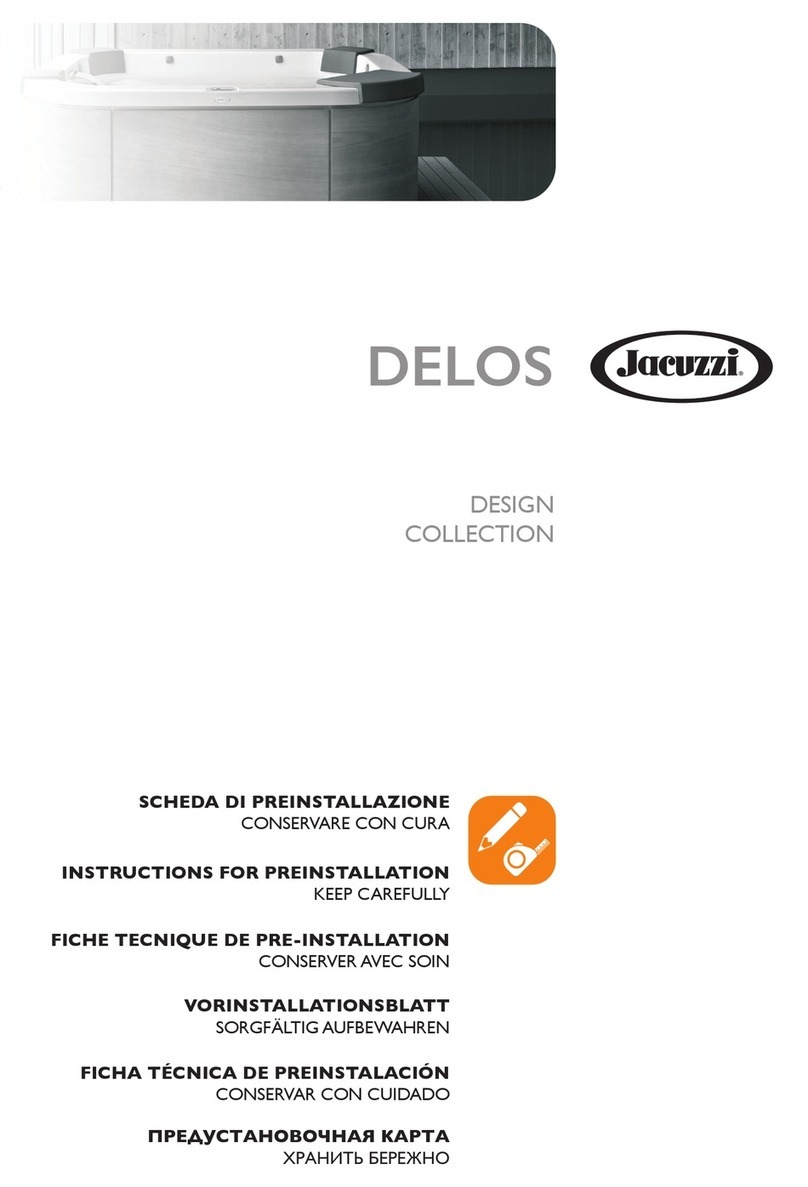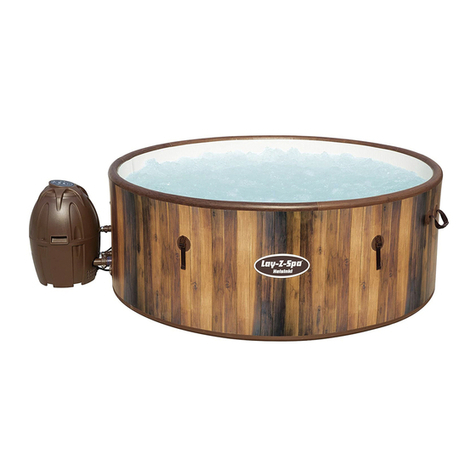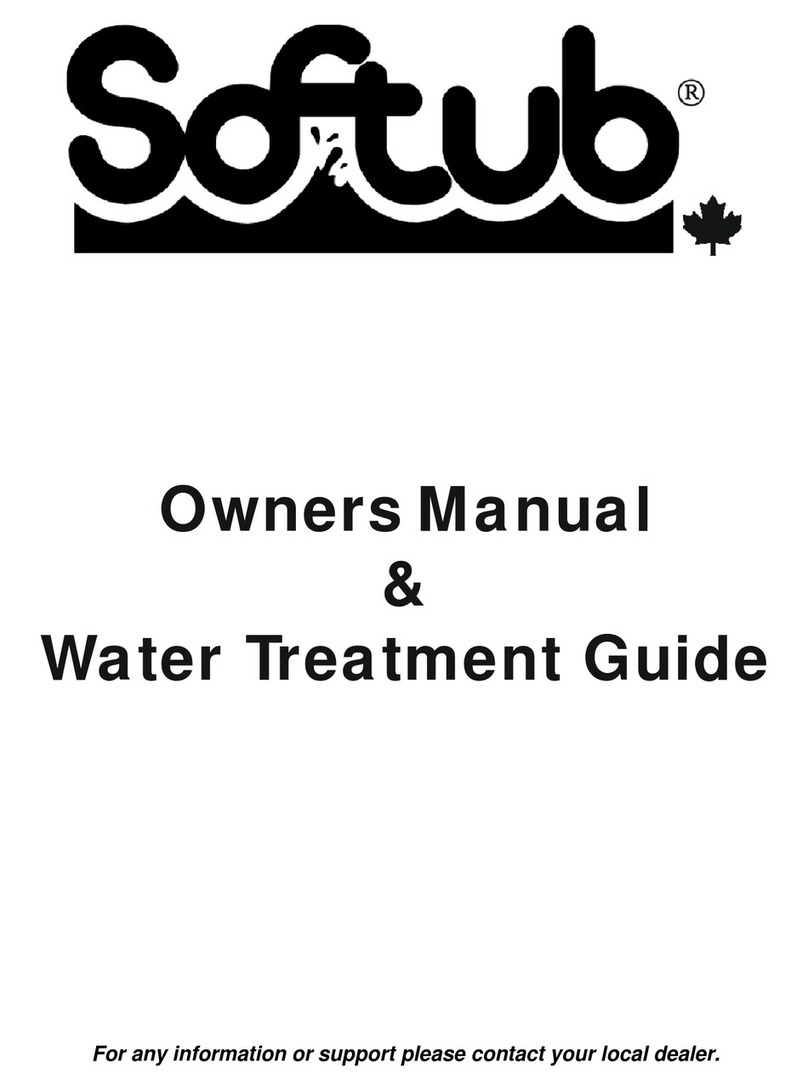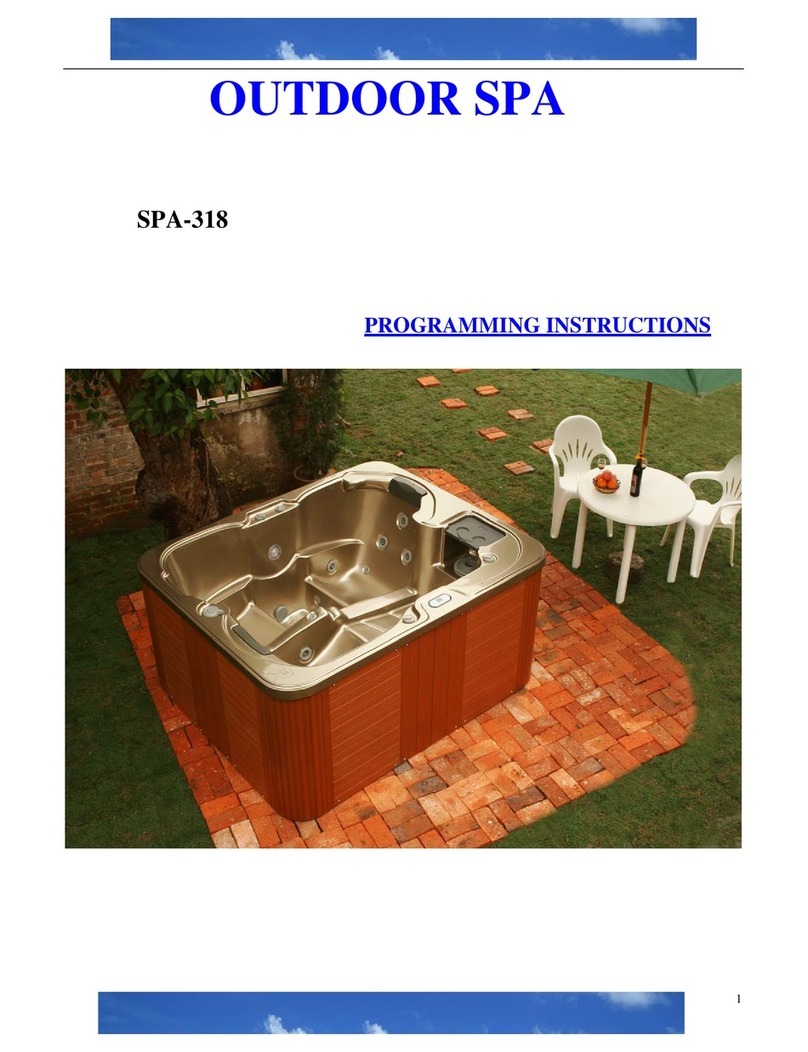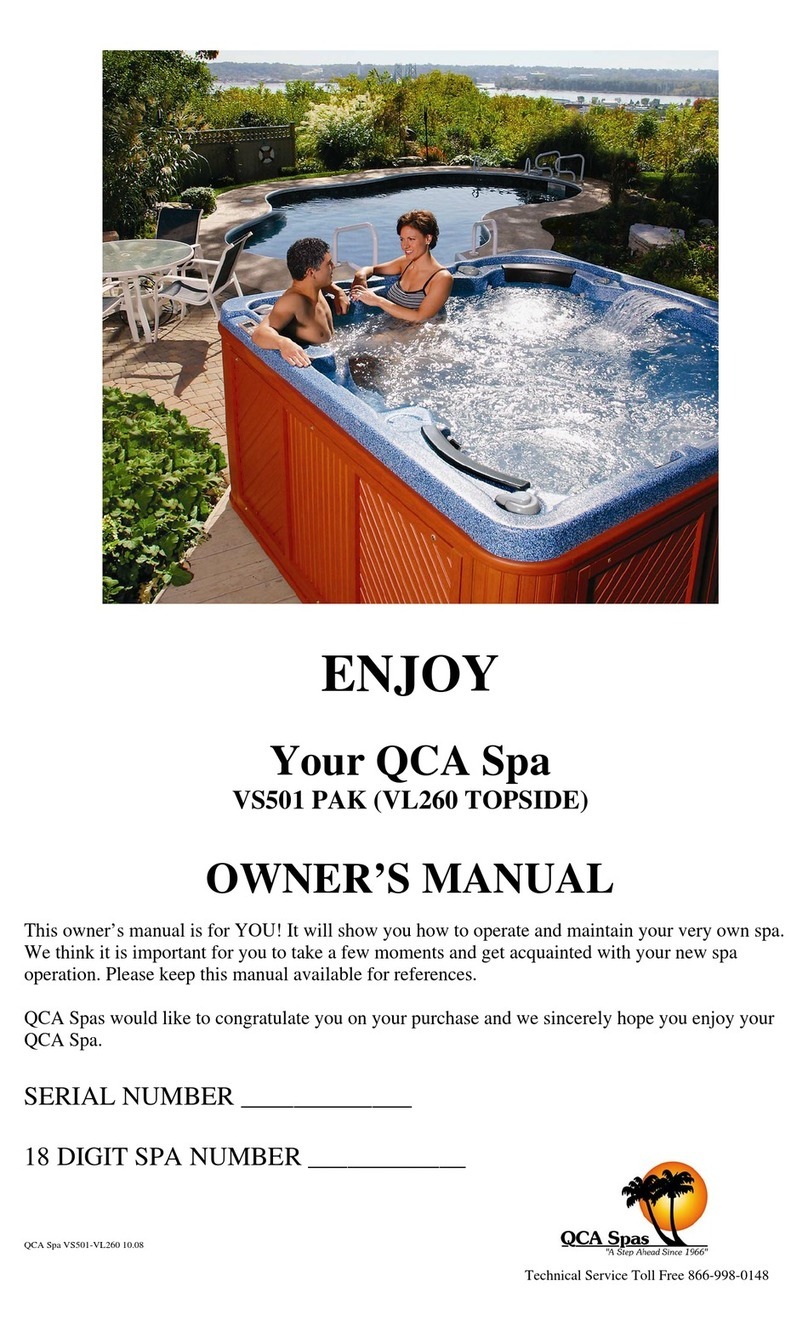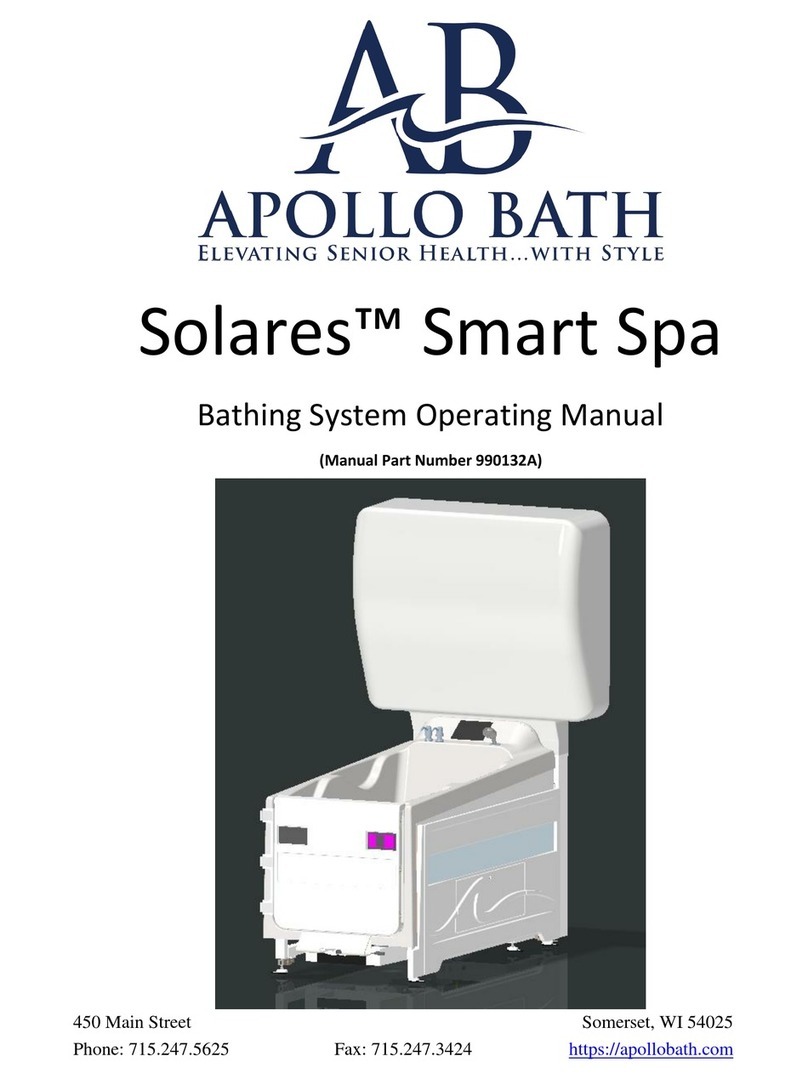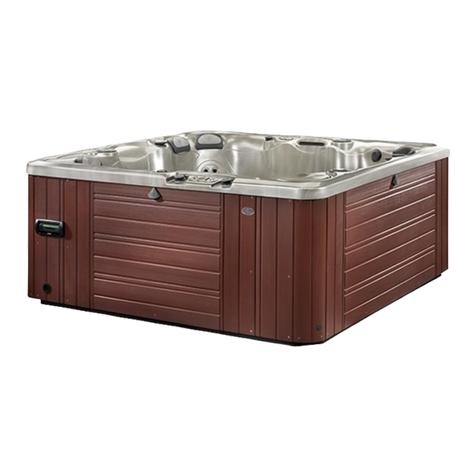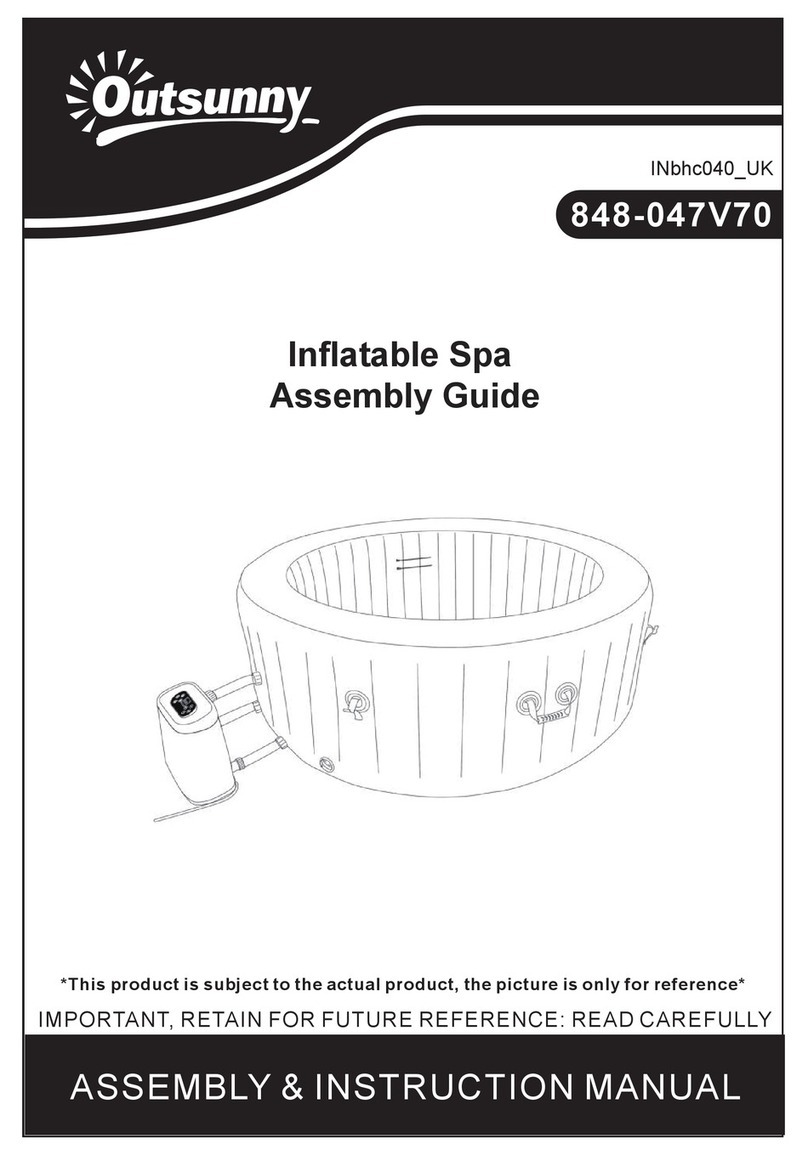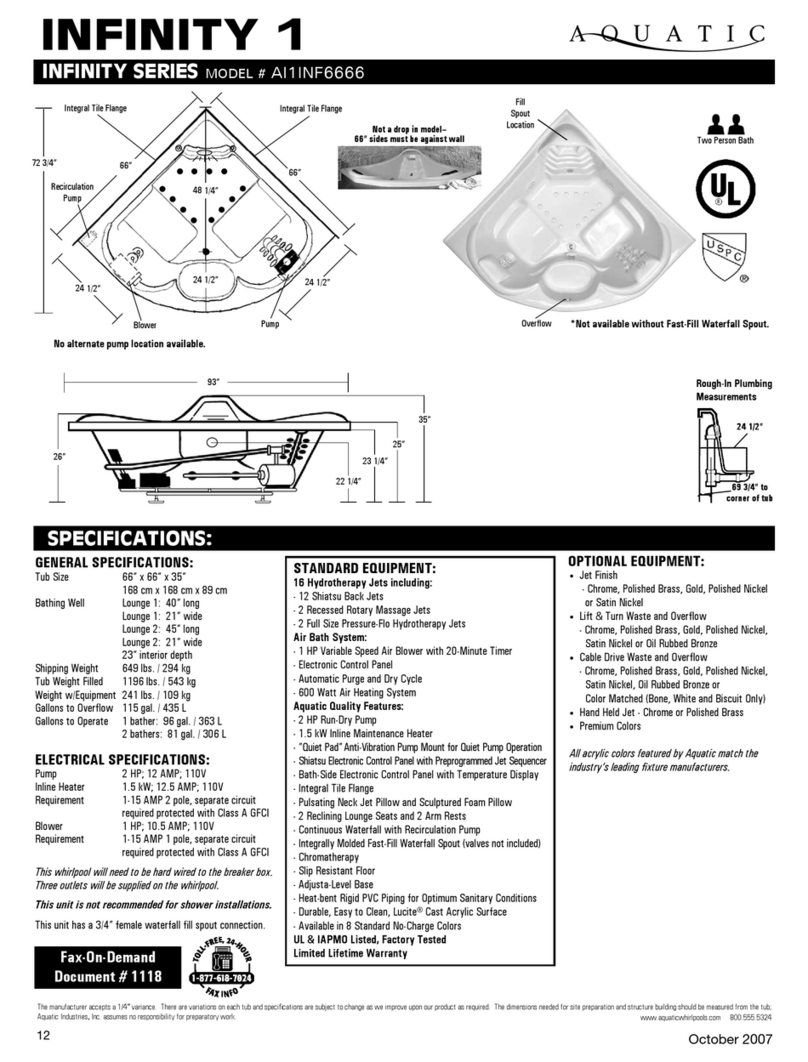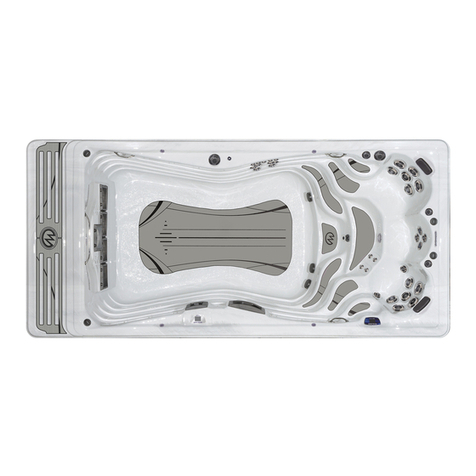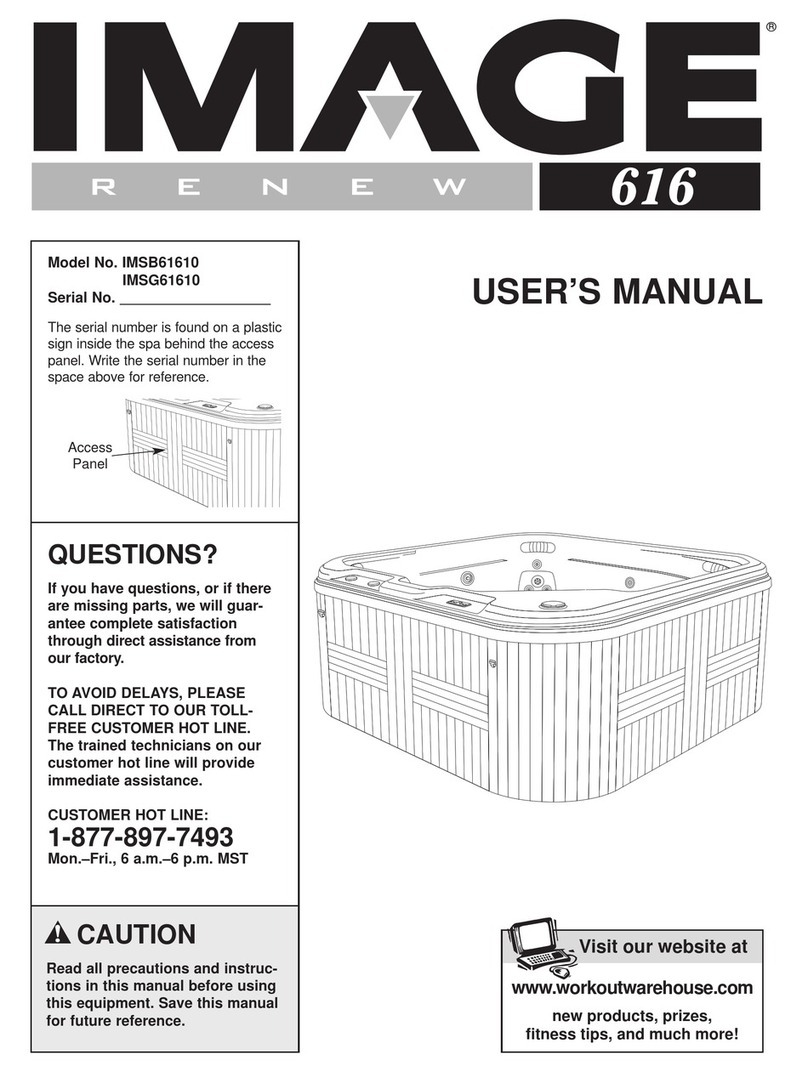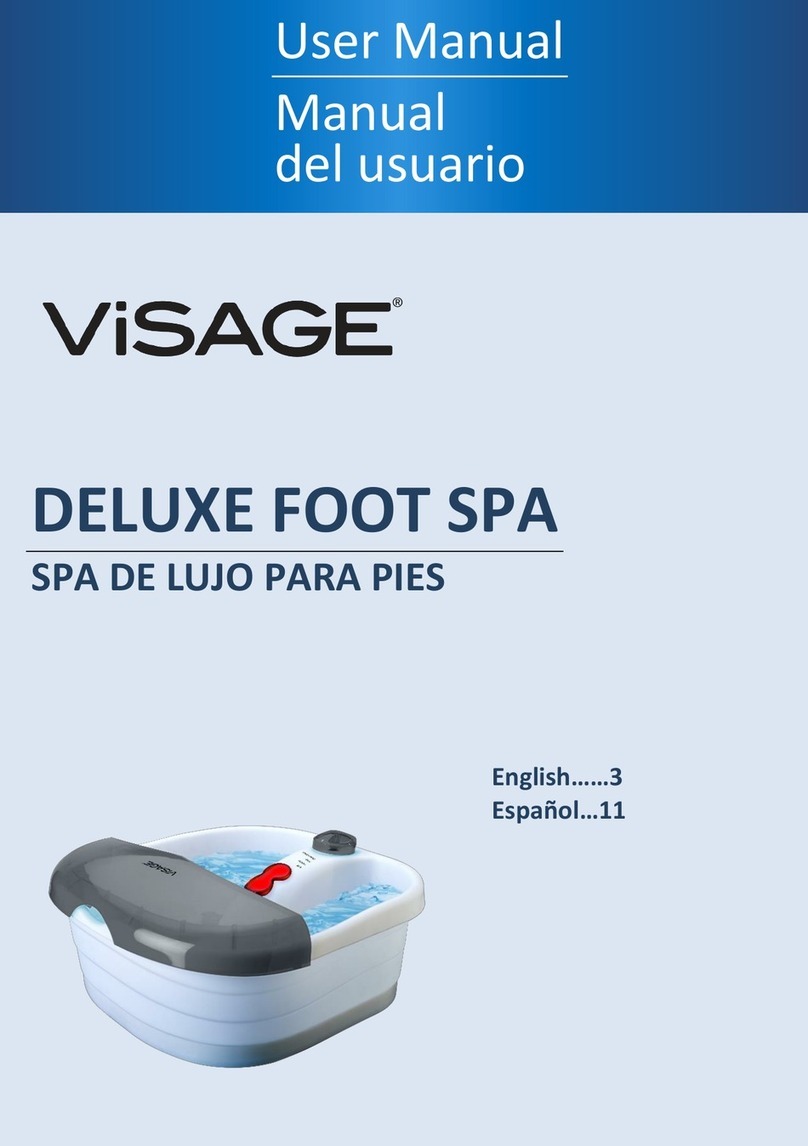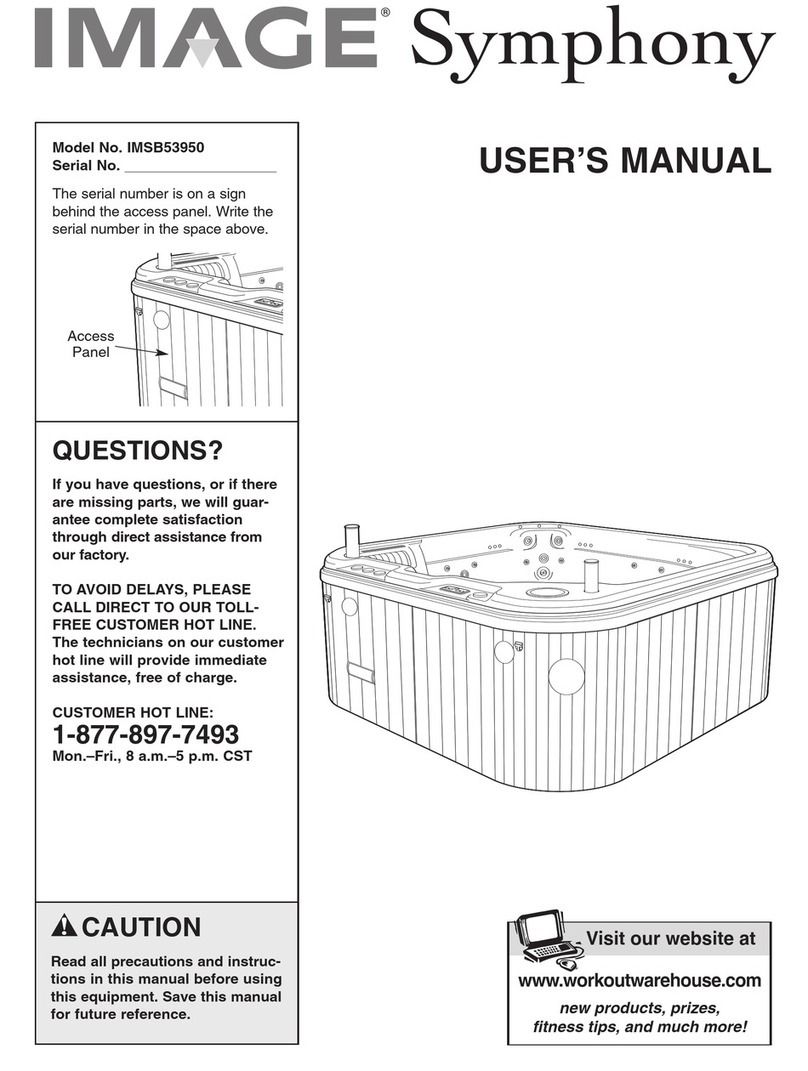
8
Operating Instructions
Now that your Venterra spa is in place, you are probably eager to take advantage of its unique designed-in
features—especially the patented Jacuzzi Whirlpool Bath hydromassage performance. Besides being a beautiful
addition to your indoor decor or outdoor landscaping, your Jacuzzi whirlpool spa will provide you with the ultimate in
spa pleasure.
Basic Control Set-Up
The control set-up on your Venterra spa is designed to give you fingertip control of the heater, air induction, light
and whirlpool, filter, and blower systems of your unit from inside or outside your spa. Follow the basic control set-
updescribedbelowtofamiliarizeyourselfwiththeseveralfunctionsofthecontrolpanelslocatedonthetopofthespa.
CAUTION
Donotturnonpowertothespaunlessitisfilledwithwatertothenormalwaterlevel.(Seewaterlineindicator
mark on skimmer frame.) When the power is on, the built-in timer may activate the system even though the
SYSTEM is turned off at the control panel. If the spa’s motor/pump is actuated when there is not sufficient
water in the unit, the circulation pump and heater could be irreparably damaged. Not heeding this caution
will nullify the warranty. In addition to damaging the unit, operating the spa with insufficient water could
cause a fire.
OPERATION
• Using a garden hose, fill the spa with water to the
water line indicator mark on the skimmer frame. (see
page21forinformationonusingWaterRainbowasa
fill spout if desired.)
• Atthehouseservicepanel,turnonthecircuitbreaker
or switch that controls the electrical service to your
spa. Plug the line cord into a 115 VAC 20 Amp
receptacle. (Makesurethereisnootherapplianceon
that circuit.)
FOR WARRENTY INSTRUCTIONS CONTACT:
• JACUZZI WHIRLPOOL BATH
• AUTHORIZED SERVICE AGENT
OR JACUZZI WHIRLPOOL BATH (800) 288-
4002, IN CALIFORNIA (510) 938-7070
CAUTION: DO NOT BREAK DOOR SEAL;
OPENING DOOR VOIDS WARRANTY
THIS EQUIPMENT REQUIRES QUALIFIED SERVICE
PERSONNEL FOR PROPER REPAIR. CONTACT YOUR
JACUZZI WHIRLPOOL BATH DEALER FOR SERVICE.
NO USER SERVICABLE PARTS BEHIND THIS DOOR.
CAUTION
This system is GFCI (Ground Fault Circuit Interrupter) pro-tected for your
safety. Bypassing the GFCI or tampering with the system in any way may
cause electrical shock, in-jury or death and will void the warranty. GFCI
protection does not extend to 230 VAC circuit conversion. If test indi-cates
that the GFCI is not functioning, DO NOT USE THE UNIT until the electrical
problem has been corrected. (See installation instructions.) TEST THE GFCI
ONCE A MONTH.
TEST PROCEDURE
Unit must be filled to proper water level and correct power supplied.
1. Push TEST button of GFCI.
2. RESET button should pop out. This should cut
off power to the system. CAUTION: if RESET button
does not pop out, or if RESET button does pop out and
system is still on, DO NOT USE YOUR SPA.
3. If the GFCI tests okay, restore power by pushing
in the reset button. The RESET button must be pushed
until it locks into place and remains depressed.
IF THE GFCI FAIL TO RESET PROPERLY, DO NOT USE THE
SPA! CONTACT A QUALIFIED ELECTRICIAN.
FLOW
SWITCH
TEMP.
SAFETY
SWITCH
INTERLOCK
SWITCH
LIGHT #1
LIGHT #2
M
o
n
d
a
y
T
u
e
s
d
a
y
W
e
d
n
e
s
d
a
y
T
h
u
r
s
d
a
y
F
r
i
d
a
y
S
a
t
u
r
d
a
y
S
u
n
d
a
y
Turn dial to correct time and day. Slide tabs
toward center for desired operating periods. (One
tab = 2 hrs.)
HEATER
BLOWER
JETS
MOTOR/
PUMP
GFCI
TIMER
FIELD WIRING BOX
(System Control Module P/N 876000
IMPORTANT: THIS UNIT IS FACTORY WIRED FOR USE
ON 115 VAC 30 AMP (3 WIRE) CIRCUIT ONLY.
Converting the electrical system to 230 VAC requires
a 4 wire 230 VAC 50Amp circiut breaker; refer to the
instructions on the rear of this cover. The conversion
should be done by a qualified electrician.
REFER TO N.E.C. (NATIONAL ELECTRIC CODE AND
LOCAL CODES)
115 VAC ONLY
ACC. SWITCH
SYSTEM SWITCH
BOND BAR
THERMOSTAT
FIELD WIRING JUNCTION BOX
TIMER
CIRCUIT
PROTECTOR
BUTTON
CIRCUIT
PROTECTOR
BUTTON
AIR BLOWER
SELECT
TOGGLE
SWITCH
PLUG-IN
CONNECTORS
GFCI
